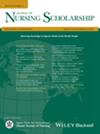Factors Influencing Mistriage Based on the Korean Triage and Acuity Scale: A Retrospective Cross-Sectional Study
Abstract
Introduction
Mistriage is important because of its potential for serious consequences, notwithstanding the beneficial effects of the emergency patient classification system employed to alleviate overcrowding in emergency departments (EDs). This study aimed to assess mistriage using the Korean Triage and Acuity Scale (KTAS) and identify factors influencing it.
Design
Retrospective cross-sectional study.
Methods
We examined the factors influencing mistriage in the KTAS and rates of under- and over-triage. Participants were obtained by combining electronic health records with registry data from the National Emergency Department Information System. We assessed the eligibility of patients aged ≥ 15 years who visited the ED between July 1, 2022, and June 30, 2023. Using the KTAS classification criterion, two experienced experts determined the final acuity level. We employed multivariate logistic regression analysis to evaluate the factors that predict under- and over-triage.
Results
Of 53,947 ED encounters, 1110 participants were enrolled in this study. Mistriage occurred in 207 (18.6%) patients: 88 (7.9%) had under-triage, and 119 (10.7%) had over-triage. In adjusted analyses, under-triage was associated with lower mean arterial pressure (odds ratio [OR], 5.42; 95% confidence interval [CI], 1.45–20.32) and presenting complaints of immunity or fever (OR, 3.41; 95% CI, 1.38–8.45), while over-triage was associated with advanced age (OR, 0.52; 95% CI, 0.28–0.98), pain (OR, 1.96; 95% CI, 1.18–3.25), lower KTAS experience (OR, 1.95; 95% CI, 1.08–3.51), and several specific present complaints.
Conclusions
By improving mistriage, the quality of emergency medical services may be enhanced through reduced costs, increased operational efficiency, and improved patient safety and satisfaction. Implementation of standardized criteria, validated triage tools, and enhanced provider training is crucial for achieving more accurate emergency triage. Additionally, establishing regulatory and financial incentives and developing realistic standards for mistriage management will optimize triage processes and ensure prompt, prioritized care.





 求助内容:
求助内容: 应助结果提醒方式:
应助结果提醒方式:


